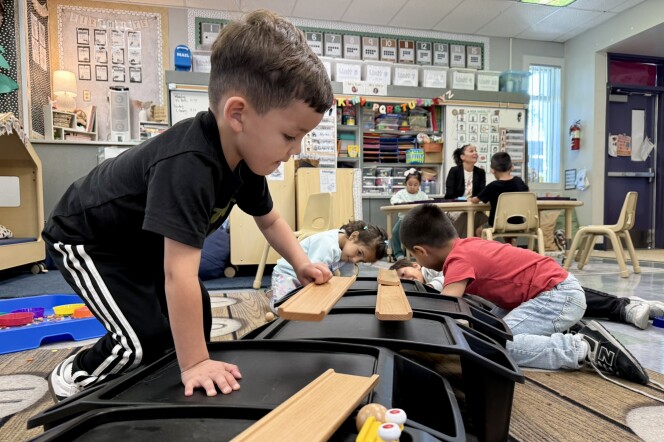With our free press under threat and federal funding for public media gone, your support matters more than ever. Help keep the LAist newsroom strong, become a monthly member or increase your support today.
Southern California Is Very Chilly (Again). Here’s How To Keep Heat From Leaking Out Of Your Home

Cold weather really does feel worse here, and it’s not letting up anytime soon.
Southern California is being hit with advisories from gusty Santa Ana winds, and the National Weather Service in Oxnard says that our recent storms have brought cold air into areas that are typically protected from offshore winds.
It’s chilly, to say the least. That means we’ll need to find ways to warm up. Here are things you can do.
Look For Signs Of ‘Leaking Heat’
The Natural Resources Defense Council says preventing leaking heat is one of the best ways to stay warm. That means you’ll want to be on the lookout for cracks and gaps in your home. Up to a third of home heat loss happens through windows and doors, according to NRDC.
- Caulking
Don’t shy away from caulking those baseboard cracks or weatherstripping your windows and doors (these are thick strips that seal out air leaks). If you’re a renter, ask your property managers to repair it.
- Open And Close Your Blinds Strategically
Use your blinds and windows to your advantage. They protect the temperatures inside your home because sunlight can help with warming. When the sun is out, open your blinds so some of that heat can seep in. As the evening comes, close them. Your windows will get chilly to the touch as temperatures drop, and it’s easy to feel that difference when you’re sitting nearby. Blinds and curtains are a small barrier between that, unless you have insulated blinds, but every bit helps.
- Close Those Window Cracks
You’ll want to make sure your windows close properly, too. If a window is off its track, that will let in a cold draft. Keep in mind, you could still feel cold air coming in if you’re in a highly windy area. If you have extra towels and a deep disdain for coldness, then consider lining towels around the edges of anything that leads outside (e.g. window frames, doors, skylights if you’re lucky).
Maximize Your A/C, Heaters And Fans
State law requires residential units to have heating systems that can keep indoor temperatures at a minimum of 70 degrees. That means every dwelling unit and guest room offered for rent or lease should offer heating equipment, usually central air conditioning (A/C) or a wall heater.
- Use Heat Smartly To Save Money
Cranking things like the A/C and wall heaters can be expensive. If money is tight, be judicious about how and when you use your utilities. For example, only use heaters at night or only set the thermostat to around 70 degrees.
- Open And Close Those Vents
If you have central A/C, look at where the vents are around your home. Are any open in places where you don’t stay long? Practice opening and closing those so warm air only goes where you need it (most vents should have a small toggle lever). Humidifiers can also help you warm things up — and it’s useful to add moisture into our dry air.
- Adjust Your Wall Heaters
If you have a wall heater, you can change the output by adjusting the knob (usually at the bottom). Since wall heaters can only warm the areas where they’re placed, it’s essential to close doors to rooms you won’t be in so hot air doesn’t get wasted.
- Turn On Your Ceiling Fan (Really)
If you have a ceiling fan, try turning it on. This sounds counterintuitive, but there’s science behind it. The direction a fan turns can push air in different directions, and since hot air floats up, you’ll want to move that around. Your fan should spin clockwise to create an updraft to circulate. Not all fans will have this option, though.
Gas Bills Are Going Down
How you approach heating your home can feel like an energy trade-off. If you use A/C, you’re running up your electric bill. If you use a wall heater, your gas bill won’t be pretty either. And other heat tips likely aren’t as effective as you’d like.
Staying warm at home has been surprisingly tough for Southern Californians. SoCalGas, the primary gas utility managers for our region, let customers know earlier that gas bills would rise dramatically because of a host of issues, including increased demand during these winter months. The utility provider said on Jan. 31 that next month's bills should be much lower.
If you paid $300 in January, then your next bill should be about $135 for that same usage. Costs are still up from last year's average of $99, though.
If you need help paying your bill, SoCalGas has aid programs that include a statewide arrearage payment plan, one-time grants and monthly discounts. The company previously had a pandemic-era moratorium on shut-offs that ended in 2021.
Updated January 31, 2023 at 4:29 PM PST
This story was updated to reflect SoCalGas's announcement on Jan. 31 about a drop in the utility's cost for consumers for February.








